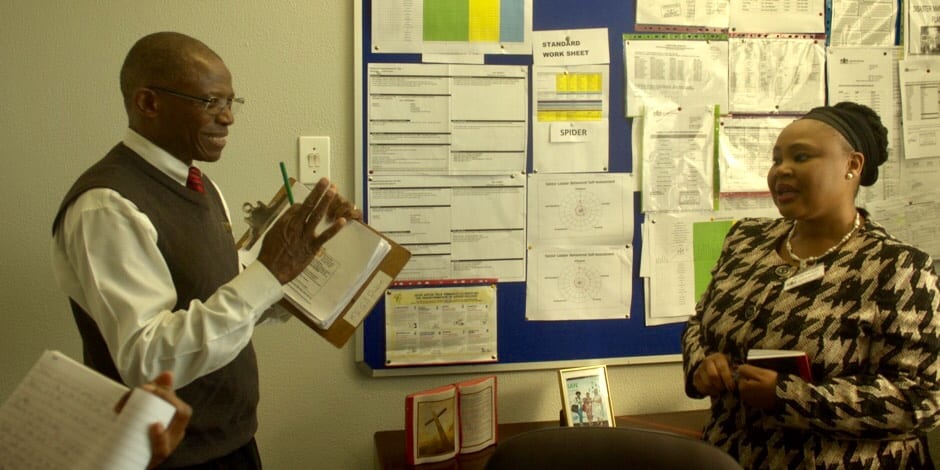
New product development: specialization vs flexibility
COLUMN – To develop a successful product or service an organization has to effectively manage the tension between the experts' specialization and the entrepreneur's flexible approach to innovation.
Words by: Boaz Tamir, President, Israel Lean Enterprise
As part of the effort to obtain a competitive advantage, both specialization and flexibility are necessary. These two elements interact in a way that resembles the force between two magnets: they can end up mutually repelling or attracting each other.
For any organization operating in a complex environment, success will depend on the ability to manage the tension between professional specialization and operational flexibility.
I am reminded of engineer and physicist Avraham Suhami, who was CEO of Elscint (a pioneer in the development of Mammography and CT technology, purchased by GE Medical in the 1990s) some three decades ago. Suhami once complained to me about the "habit of [veteran, conservative] physicians to oppose the introduction of advanced technology and their preference for plastic X-ray photographs held up against neon lights over advanced computer screens." Suhami proved that he was correct in terms of technology, but he was wrong in terms of understanding the nature of the business. In his opinion, the introduction of new technology in the market fell through solely because of the doctors' (users) "ignorance" and conservatism, rather than for his own inability to connect - empathically with user (subjective) experience (UX) - with the immediate needs of his customers (see my paper When Every Bastard is a King from July 2011).
From a strictly professional point of view, the (covert or overt) struggle for control over the product development process is perhaps justified, but it isn't always dealt with in a smart way.
From the subjective vantage point of the technological, marketing or operational personnel, their contribution to value creation for the customer is critical, and should not be ignored. Experts (such as the doctor and the engineer in our previous example) build up extensive professional experience in a narrow field. The valid problem of the expert is the lack of flexibility in the face of users' versatile needs and markets changing in real time. On the other hand, the flexible entrepreneur might pay the price for his rushed attempt to take advantage of his understanding of the market and business opportunity, even though he lacks the professional specialization that is so critical to the development of an appropriate value package (whether a product, technology or service).
It's hard to decide which side is right – the expert-led organization that has knowledge but lacks business acumen, or the fast and flexible organization that is in control and has the ability to identify business opportunities by cracking the code of market and customer needs but risks both product mediocrity and a lack of systematic professional learning.
This dilemma is inescapable.
The Chief Engineer – or the Entrepreneurial System Designer (ESD) – who leads the product development program ("wisely" working across units in the professional matrix) prefers to build flexibility at the expense of professional depth and fills the need by outsourcing parts of the process to external providers. This means he/she might be able to achieve a short-term business opportunity, at the cost of wearing down, if not destabilize, the professional foundation and core competences that form the company's competitive edge.
Without coordination, the meeting of specialization and flexibility can generate clashes of egos and competition over control, causing tension to build up across and up and down the organization. In a familiar and stable environment, it is fairly easy to synchronize the various professional forces (individuals or teams), but in an unpredictable and ever-changing scenario it is a different story, and the professional units that must carry out flexible, independent activities can easily lose control. In this situation, staffing professional units ahead of a concerted organizational effort without proper preparation will turn into a fruitless attempt at gaining control.
Without proper staffing ("building capabilities & resources") we will need strong organizational energy ("control and directing of resources"). But the activities related to coordination – setting priorities and dividing up authority and responsibility in real time – are very inefficient and upset the work of the organization/team. Investing energy in putting out fires in a complex organization limits the ability to stay on schedule and undermines performance quality.
The familiar conflicts between units working in an open disciplinary environment, such as the mechanical, hardware and software units, are nothing compared to the conflicts between professional communities like marketing or product development. Sometimes, even a surfeit of good will and shared business vision is not enough to create the organizational coherence that can prevent power struggles over professional ego and respect, or conflicting professional agendas and personal interests. Given all this, managerial attempts to coordinate and develop teamwork around the common goal of creating value for the customer often fail.
Organizations that are managed the lean way and deal with initiative, innovation and development of products (using Lean Process of Product Development - LPPD - principles) invest their resources and energy in encouraging integration and practice in all members of the system, in creating ways to deal with the gap between specialization and flexibility, and in coming up with ways to manage an organization that is structured as a matrix (building on its advantages, while minimizing its limitations). All of this is carried out while redesigning the structure of the matrix into a Network-Type Organization and developing an organizational culture that redefines the role of the manager.
The structure of a Network-Type Organization is a development of the "matrix organization" with its various hubs of disciplinary specialization, connected flexibly. The component of specialization in a Network-Type Organization is based on the availability of all of the specialty units that exist in the organizational space (virtual, global) to work when it is necessary, rather than waiting as resources are wasted without giving any useful contribution. This allows the full and high-quality usage of rare knowledge resources, without negatively affecting flexibility. The Network-Type Organization is prepared to activate the system of possible contacts among the nuclei of specialization it has (for more on this, check out my 2007 book Start-Up Down).

Suitability of the organizational architecture is an essential requirement, but is in itself not enough to cope with the tension between specialization and flexibility or to guarantee coordinated, synchronized teamwork. For this reason, a culture of trust and mutual professional support is necessary. Building it entails the redefinition of the role of the "manager" and of the meaning of "management."
Management is necessary in a network-type organization, a complex entity that is often operating in a chaotic environment under an organized framework ("chaordic" – as VISA's founder and former CEO Dee Hock called it). A change in the organizational paradigm is based on transferring the managerial weight from a methodology based on command and control through the "use of power" (which is typical of hierarchical organizations) to the structure of a decentralized system that can manage organized, democratic decision-making without turning into anarchy. Among other aspects, this entails creating a working language and professional standardized work, the visual illustration of work processes, and the development of the capacity for problem solving and decision-making in real time by all workers and suppliers (who are active in the organizational network). These principles are the foundations of a learning and flexible lean enterprise, which can simultaneously integrate the qualities of innovativeness, specialization, and flexibility that are necessary to cope with complex, rapidly changing conditions.
Building a learning specialized-flexible organization (the process we refer to as "lean transformation") is a long journey that requires considerable investment in terms of thinking and determination. No one can possibly start it without seeing it as necessary to the organization's survival. Despite the several examples of organizations that pay a very high price for their inability to deal with the tension between specialization and flexibility, many businesses have yet to start out on their lean journey.
THE AUTHOR

Read more


FEATURE – In this compelling read, the author explains how “centerlining” tools and settings can reduce variation in a process and avoid having to constantly seek adjustments à la McGyver.


FEATURE – We tend to describe lean as a holistic approach to a transformation, but we won’t be able to truly embrace it until everyone starts to see the organization as a system.


NOTES FROM THE GEMBA – Aloïs, a Bordeaux-based home care provider, applies Lean Thinking to ensure continuity of care, support employees, and grow sustainably while prioritizing patient needs and staff wellbeing.


INTERVIEW - Grey Dube reflects on the approach, challenges and successes of becoming a lean CEO, and on how this helped turn Leratong Hospital into a lean organization.

